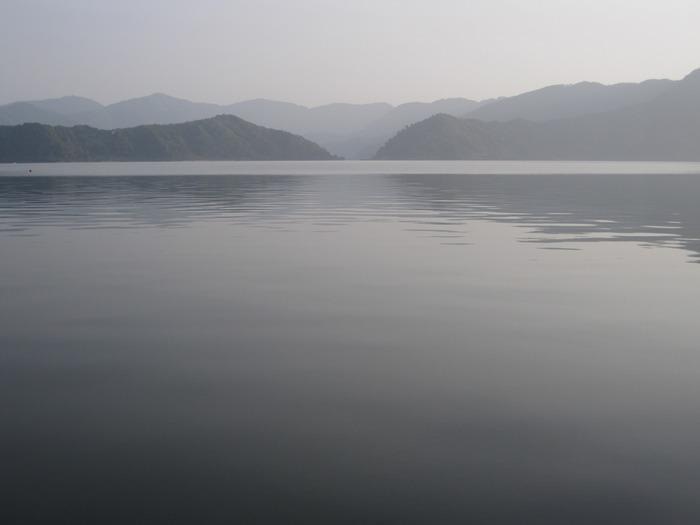The advent of agricultural practices was a milestone for modern humans and marked the start of a sedentary lifestyle and the development of “civilizations.” But the environmental aspects that guided this revolutionary change in the life of humans are still under debate.

The calm lake has an abiotic and undisturbed lake bottom that favored the accumulation of annually layered sediments for tens of thousands of years. Image Credit: Professor Takeshi Nakagawa from Ritsumeikan University.
One of the most broadly accepted theories regarding the origin of agriculture is that a food shortage crisis caused by a climatic cooling event that occurred between ca. 10,900 BC and ca. 9700 BC, which led humans to adopt agriculture as a means to increase food production.
This conventional theory is not completely accepted—the reason is many radiocarbon ages of plant remains that supported the hypothesis were re-assessed recently, and updated outcomes indicated that the period of climate cooling matched with a decrease and discontinuation of sedentary life, rather than its start.
Using the archaeological observation that agriculture appeared to have originated autonomously in various regions within a few millennia following the end of the last ice age as the basis, some scientists presume that the increased temperature of the post-glacial age led to agricultural practices by humans. But this theory fails to describe why humans did not begin agriculture much earlier in tropical regions, which had ideal temperatures even during the coldest phase of the last ice age.
Extensive climate reconstruction from ca. 16,000 BC to ca. 8,000 BC, depending on the analysis of pollen fossils found in the annually layered sediments from Lake Suigetsu, Japan, offered better insights into this debate.
A time series reconstruction of the climate change through this period and the world’s most precise chronology of the sediments formed by counting annual layers and radiocarbon dating of hundreds of leaf fossils were used by a research team headed by Takeshi Nakagawa of the Ritsumeikan University, Japan.
The team showed that the initial attempts to domesticate plants and build settlements based on agriculture coincided with the course of a comparatively warm and stable climate.
Recent data obtained from the researchers indicate that the transition from the ice age to the post-glacial age was characterized by shifts between stable and unstable periods. The agricultural practices did not commence during the warm climate conditions in ca. 13,000 BC. However, humans had to wait until the climate ceased its short-term variations and large amplitudes in ca. 12,000 BC.
Agriculture is a practice of sustenance that demands planning. However, for prior planning, a stable future is essential. During an unstable climate, agriculture was extremely risky because the precise prediction of weather was impracticable. This posed a challenge in choosing suitable crops for agriculture.
Under such conditions, hunting and gathering were considered to be a more reasonable sustenance strategy compared to agriculture because the natural ecosystem comprises a wide variety of species from which humans could find “something” edible, in place of the farmlands.
These new observations by Nakagawa and his collaborators contradict the conventional assumptions that look at agriculture as a revolutionary step toward the history of humanity. Rather, hunting and gathering and agriculture were considered as equally reasonable adaption strategies, based on the stability of the climate.
Climate stability has not been debated actively by paleoclimatologists, partially because annually resolved natural archives of climate change are unusual and also because assessing such archives at an adequately high time resolution requires undoubtedly dedicated effort
The special sediments obtained from a small lake in Japan, together with the two-decade-long work of the research team to achieve data from the sediments, ultimately led to new findings with the potential to change the self-image of modern humans.
Journal Reference:
Nakagawa, T., et al. (2021) The spatio-temporal structure of the Lateglacial to early Holocene transition reconstructed from the pollen record of Lake Suigetsu and its precise correlation with other key global archives: Implications for palaeoclimatology and archaeology. Global and Planetary Change. doi.org/10.1016/j.gloplacha.2021.103493.